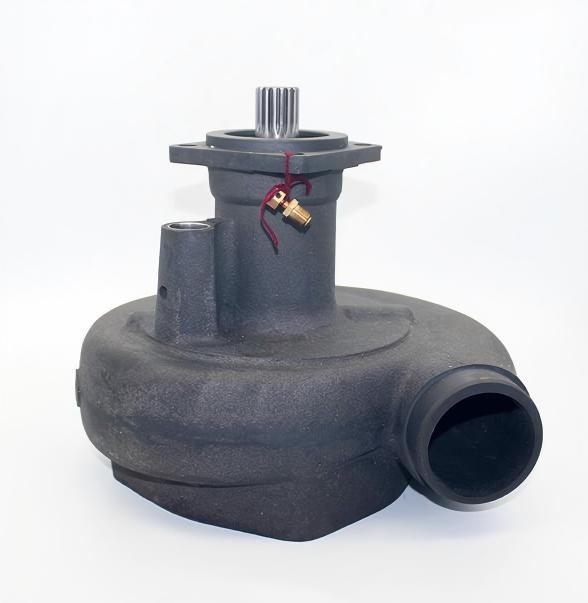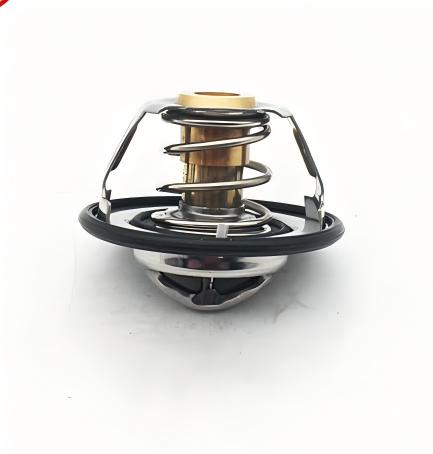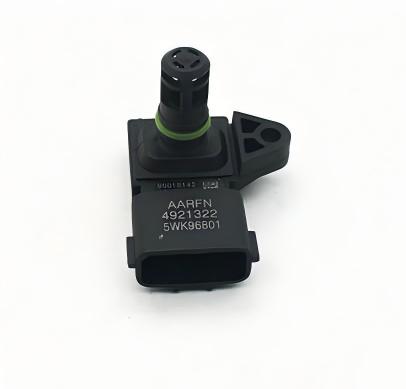Why Is Your Diesel Engine Generator Overheating? 6 Common Component Failures
Overheating in the engine of a diesel engine is a serious problem that could cut off your power source and cause damage to expensive components. If not addressed, it can lead to lower performance, higher repair costs, and prolonged downtime. These are issues that affect both businesses and homeowners equally hard. If you’re thinking, “Why is your diesel engine generator overheating?” The answer is usually traced back to a specific component’s malfunction. Knowing the root cause is your best protection against unexpected breakdowns and will keep your generator in good working order whenever you require it. Below, we break down the six main components that cause the generator of a diesel engine to overheat.
What Happens When a Diesel Engine Generator Overheats?
The overheated engine of a diesel engine does not just trigger warning lights; it can cause damage to internal components and cause minor problems to escalate into major issues. If temperatures rise above acceptable limits:
- The windings of the stator can burn or melt, which can limit the generator’s capacity to generate power.
- Components of the rotor can warp due to extreme heat, which can lead to inefficient operation or even complete failure.
- Bearings can melt or become stuck due to excessive friction, causing severe damage to engines.
- Head gaskets for cylinder heads, as well as radiator cores and exhaust valves, may crack or leak, or even break completely.
Failure 1:Cooling System
When you ask, “Why is your diesel engine generator overheating?” A damaged cooling system is typically the first area to investigate. The cooling system, which includes the water pump, radiator pipes, thermostat, and cooling fan, is designed to maintain temperature control. If one component is not working, heat can build up quickly.
Common cooling system problems that result in the engine overheating are:
Insufficient coolant levels or concealed leaks (even tiny drips can cause major problems).
A broken or blocked radiator, or a radiator cap that is unable to maintain correct pressure.
A water pump that is damaged or a blocked cooling hose (stopping the coolant’s flow).
A malfunctioning temperature gauge that isn’t triggering your cooling mechanism to turn on when it is required.
Maintenance Tip: Examine connections and hoses for leaks or cracks and repair damaged components as soon as possible.
Failure 2:Radiator Problems
Your generator’s radiator is like a heat exchanger—its job is to release excess heat from the coolant. If it’s not working right, diesel engine generator overheating is almost guaranteed. Radiator issues are especially common in dusty, dirty, or harsh environments, but they can happen to any generator over time.
Key Radiator Issues to Watch For
Exterior Blockage: Dirt, debris, or bent cooling fins restrict airflow, preventing heat from escaping the radiator.
Internal Blockage: The accumulation of mineral deposits, oil sludge, or rust from old coolant can block the internal tubes of radiators, slowing the flow of coolant.
Leaks: Damaged cores of the radiator or seals that aren’t tight enough, or a failed radiator, cause cooling fluid loss. Without enough fluid, it isn’t able to cool the engine.
Prevention Tips: Clean the outside of the radiator every month using low-pressure to get rid of debris and dirt (be gentle so as not to bend the fins). Replace any components that show evidence of wear or leakage.
| Radiator Issue | Symptom of Diesel Engine Generator Overheating | Quick Solution |
| External Blockage | Overheating when the generator is under load | Clean fins with a soft brush; remove debris around the radiator |
| Internal Blockage | Slow heating that escalates to overheating; poor coolant flow | Flush the radiator and replace old coolant with fresh fluid |
| Leakage | Rapidly dropping coolant levels; visible puddles under the generator | Reseal loose connections or replace damaged radiator cores/caps |
Failure 3: Water Pump

It is also an essential “heart” of your generator’s cooling system. It circulates coolant between the radiator and the engine. If the pump malfunctions, then coolant stops flowing, and a diesel engine generator’s overheating is the next thing to happen within a few minutes. This is a component that is often ignored till it’s way too late; therefore, knowing what warning indicators to look for is vital.
Water pump issues are typical :
The seal wears out, or the gold gets old, leading to coolant leaks.
Cavitation (air bubbles in the coolant, which causes damage to the impeller of the pump).
Broken or worn-out impeller blades (reducing the capacity of the pump for moving liquid).
Warning Signs of Water Pump Failure: The leak of coolant close to in front of your engine (where it is), strange grinding or squealing sounds, or sudden temperature rises even when the generator is operating.
Failure 4:Thermostat Malfunction

The thermostat serves as the “gatekeeper” for coolant flow. If the engine is cold, it is shut off to allow the engine to rapidly warm up. When it is at the ideal temperature (usually between 80-90 °C), the thermostat is opened to allow coolant to circulate throughout the radiator. If the thermostat is stuck closed or open, it is impossible for the engine to regulate the temperature, and it can cause overheating of the diesel engine generator.
When your engine’s diesel generator overheats occurs right after starting or when under light load, it is most likely that a thermostat has gotten stuck. to be the reason.
Stuck open: Coolant circulates too early, which means that the engine doesn’t reach its optimal operating temperature. This results in low fuel efficiency and, in extreme instances, overheating as the system isn’t able to hold the heat needed to work correctly.
Closed and stuck: Coolant is unable to circulate to the radiator in any way. The engine is heating up quickly as the gauge for temperature rises from “hot” to “hot” within minutes.
Solutions : Check the thermostat by taking it off it and putting it into the water in a pot using a thermometer. The water thermostat should be able to be opened once it reaches 80-90 °C. If it isn’t opening or is stuck closed, you can replace it with one that matches (never utilize a different model or style).
Failure 5:Temperature Sensor

A temperature detector (or transmitting unit) is responsible for relaying accurate temperature information to your generator’s gauge as well as alarm system. If the sensor is not functioning, it will not give accurate readings. This could lead to excessive heat in the diesel engine that is not noticed or false alarms, which make you overlook the real issues.
Common temperature sensor problems:
Corroded or damaged wiring connections (disrupting sensors’ signals).
The sensor itself is corroded (from cooling or exposure to the elements).
Internal damage to the circuit (wear and tear over time that breaks the sensor’s components).
Solution: Use a multimeter to verify the accuracy of the sensor (you can purchase a low-cost multimeter from any hardware retailer). Check all wires for damage or corrosion.
Failure 6:Cylinder Head Gasket and Valve Damage
Cylinder head gaskets and valves are important and essential pieces of the engine, and they are especially at risk due to overheating of the diesel engine generator. Indeed, one of the most common causes of head gasket failures is overheating, and failure of even more of these parts leads to even more overheating. This creates a negative feedback loop.
Signs and Causes of Head Gasket Failure
Area head gaskets seals the gap between the engine block and the head of the cylinder. It keeps the oil and coolant separated. So, when the engine is overheating, the metal expands unevenly, breaking the gasket seal. This creates diesel engine generator overheating, as coolant is leaking to the combustion chamber, or the oil pan.
Some common signs of a head gasket failure include:
- White exhaust smoke due to coolant burning.
2. Low coolant levels, with no visible leaks (the coolant is leaking internally and burning).
3. Oil with a white, foamy consistency.
Overheating Caused By Valve Problem
The valves are designed to control the flow of air and exhaust within the engine. When the valves are damaged, or any of these:
Poor Sealing: Failure of the valves to close tightly allows hot exhaust gases to reenter the engine, causing overheating.
Carbon Buildup: Valves can become dirty and oil can build up around them. If this goes unresolved, the valves will have increasing difficulty opening and closing and the cycle will become more inefficient, trapping more heat.
Other Common Causes of Diesel Engine Generator Overheating
Overall, component failures are primary causes, but diesel engine generator overheating can also come from operational or environmental causes. Those are usually easier to fix than component removals/replacements, so they are worth checking first:
- Overloading: Exceeding the generator’s rated capacity causes the engine to work harder than the cooling system can handle. Always operate within the generator’s power limits. If more power is needed, get a larger generator.
- Low or degraded engine oil: Oil lubricates the engine and helps dissipate heat. If oil levels are low, or if the oil is old and dirty, it can’t do its job. Oil levels should be checked weekly, and oil should be changed on the schedule the manufacturer suggests.
- Environmental factors: Extreme heat, humidity, and altitude make it more difficult for the generator to cool down. In hot climates, make sure the generator is placed in a shady spot with good airflow. In high altitude places, generators should be chosen that are designed for those conditions, as they generally have modified cooling systems.
- Operator Errors: Please carefully review our warm-up combustion engine protocols before usage. Failure to operate diesel engine generators under load or running them without the low warmup (5-10 minutes) will cause overheating. Take the time to review the user manuals provided. Following the user manuals provided for initial combustion engine startup protocols, fuel type, and operational procedures prevents overheating issues.
Conclusion
So, what causes your diesel engine generator overheating? In nearly all cases, it boils down to one of the six component failures we’ve covered. Recognizing these failure signs and conducting regular maintenance helps avoid costly downtime, repairs, permanent equipment damage, and further system issues.
If you’ve checked all the above components and the problem persists, call a qualified technician to troubleshoot complex issues. And when repairs aren’t feasible, replacing the faulty part (or even the unit itself) can be a smart solution.
